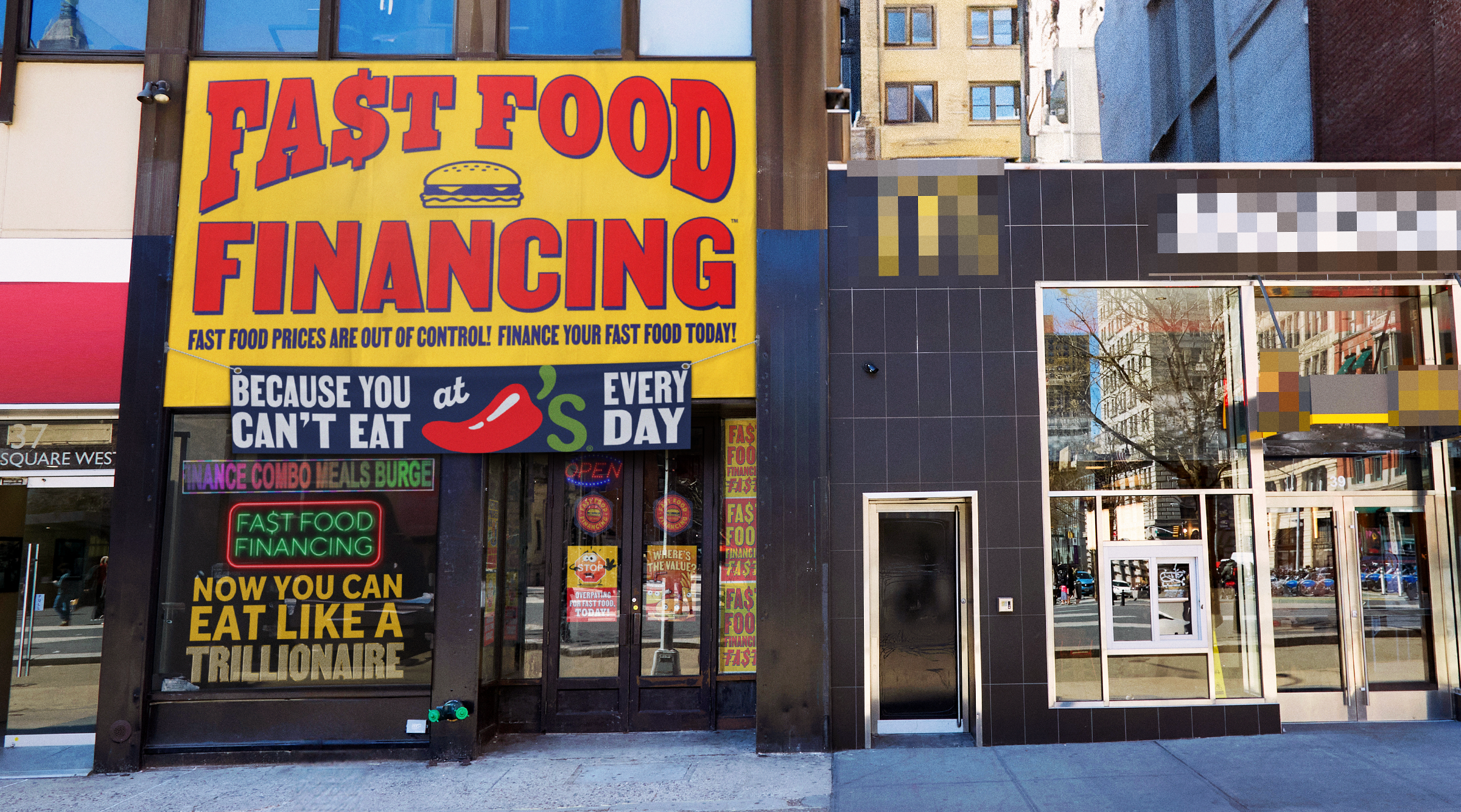Fast Food Financing: Would You Pay for a Burger in Installments?
A trend that once seemed absurd has become a reality: fast food financing. No, it’s not just a meme. Yes, Chili’s did create a publicity stunt, with a campaign that transformed a physical space into an open “office” where people could “apply” for fast food financing and receive free Chili’s coupons. But the stunt only made sense because the reality is much grimmer.
Americans are now facing over $1.2 trillion in credit card debt, according to the Federal Reserve Bank of New York. Average credit card interest rates have surged beyond 20%. For many people, those cards are being used not for indulgences, but for basics, like food, fuel, and healthcare. This desperation has opened the door for Buy Now, Pay Later (BNPL) services. These include Klarna, Affirm, Afterpay, Zip, Paypal Pay in 4 and Sezzle
Originally designed for bigger online retail purchases like certain fashion items, electronics or furniture, these platforms now cover everything from groceries to fast food delivery via DoorDash and Uber Eats.
How Fast Food Financing Actually Works
Let’s say you order a $26 meal on DoorDash. At checkout, you’re now often presented with the option to “Pay in 4” via Klarna or Afterpay. That means four equal payments of $6.50 spread out over six weeks—no interest, if paid on time.
But here’s the catch:
Most of these services charge late payment fees. Some charge as much as $8 per missed payment and 25% of the total order. Other companies that don’t charge these fees will limit future access to this financing option. They may even report the missed payments to credit bureaus, impacting your credit, which can in turn limit the person’s ability to rent.
It’s not hard to imagine how this can spiral. A user who misses multiple BNPL payments across different apps could find themselves in a complex web of small debts. Many of these are poorly tracked or coordinated.
How It Ties into Forex: Consumer Credit and Currency Pressure
At first glance, fast food financing and forex might seem unrelated. However, the ripple effects of widespread consumer debt absolutely influence currency markets.
When BNPL services become widespread, especially for essentials like food, it reflects deeper economic stress. Consumers turning to installment payments for daily expenses signal eroding purchasing power and a struggling middle and lower class. This dynamic can shape macroeconomic indicators that traders watch closely in the forex world.
Here’s how it matters:
- Consumer Health Impacts USD Sentiment: A nation’s consumer health plays directly into monetary policy decisions. When Americans accumulate debt just to survive, it pressures the Federal Reserve to either support the economy through looser policy (which weakens the USD) or tighten further to tame inflation. Tightening could strengthen the USD but risk recession. Either decision moves the dollar.
- Retail Spending & Inflation: BNPL spending artificially boosts consumption, even when consumers are financially stretched. This can keep inflation numbers sticky. Forex traders follow CPI and spending data closely. So, if BNPL props up retail sales, currencies like the USD could react more aggressively to inflation readings.
- Impact on Interest Rate Differentials: As BNPL becomes more normalized, it may complicate central banks’ timing on rate cuts. Traders betting on interest rate differentials between the U.S. and other economies (like the Eurozone or Japan) must now factor in these kinds of consumer credit distortions.
In short: when millions of Americans need a payment plan for a burger, it’s more than a cultural moment—it’s a flashing indicator of macroeconomic stress. And for forex traders, it’s another puzzle piece in anticipating central bank decisions and currency movements.
But How Many Are Using These Services?
BNPL usage has exploded: According to a survey by Numerator, half of Americans have used these services. Most users are Gen Z and Millennials and fall into the lower third of purchasing power. In less than 6 months of becoming available in the US, Klarna alone amassed over 100,000 American users, making it a total of 150 million users globally. Some of the most popular companies like Uber Eats, Starbucks and DoorDash have integrated some form of pay later functionality. And now, even restaurants are exploring it. While Chili’s Fast Food Financing is satirical in nature, it draws attention to a present where financing a meal is no longer farfetched or an exception, but closer to becoming the norm.
A Dangerous Normalization of Debt
While the installment model can help with cash flow in the short term, the risks are stacking up:
- No credit check may mean accessibility—but also a lack of regulation.
- No interest sounds safe—until late fees and penalties kick in.
- Multiple BNPL accounts with different providers make it easy to lose track.
And because some BNPL companies aren’t yet fully integrated into credit bureaus, it creates a blind spot for both consumers and lenders.
Final Thoughts
As debt levels continue to climb and essential goods become increasingly unaffordable, BNPL companies are rushing in to capitalize on short-term consumer stress. For many, these services are less about convenience and more about necessity. However, this temporary solution for now may end up leading to more problems in the near future.







